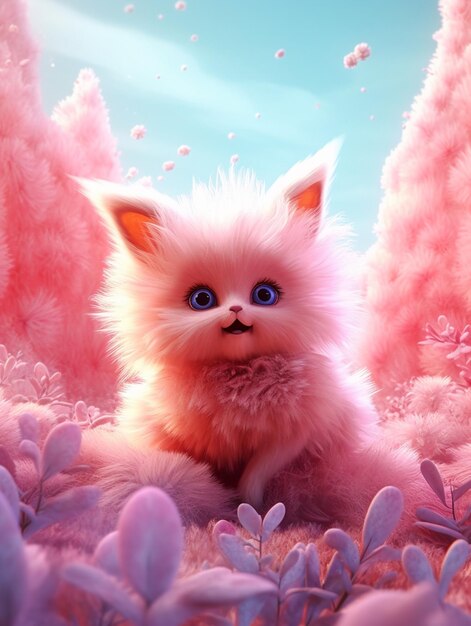Pink Cat Flower

The Pink Cat Flower, also known as Orthoceras, is a rare and exquisite bloom that has gained significant attention in the horticultural world. This unique flower is characterized by its delicate, pale pink petals and striking, cat-like appearance. The Pink Cat Flower is native to the tropical regions of Central and South America, where it can be found growing in the wild, often in shaded, humid areas.
Origins and History

The Pink Cat Flower has a long and fascinating history, with records of its existence dating back to the 19th century. It is believed to have been first discovered by European botanists in the Amazon rainforest, where it was found growing in abundance. The flower’s unique appearance and rarity quickly made it a sought-after specimen among collectors and horticulturists. Today, the Pink Cat Flower is highly prized by flower enthusiasts and is often cultivated in greenhouses and specialty gardens.
Characteristics and Care
The Pink Cat Flower is a relatively small bloom, typically growing to a height of 10-15 cm. Its delicate, pale pink petals are shaped like a cat’s face, complete with whisker-like protrusions and a small, pointed nose. The flower’s center is a bright yellow, adding a pop of color to its already striking appearance. To care for the Pink Cat Flower, it is essential to provide it with high humidity, warm temperatures, and filtered light. The soil should be well-draining and rich in organic matter, and the plant should be watered carefully to avoid over-saturation.
| Characteristic | Description |
|---|---|
| Height | 10-15 cm |
| Petal Color | Pale Pink |
| Center Color | Bright Yellow |
| Humidity | High |
| Temperature | Warm |
| Light | Filtered |

Propagation and Hybridization

Propagating the Pink Cat Flower can be a challenging but rewarding experience. The plant can be propagated through division, layering, or seed. However, the seeds are extremely sensitive and require careful handling to ensure successful germination. Hybridization of the Pink Cat Flower has also become a popular pursuit among horticulturists, with many new and exciting varieties being developed. These hybrids often exhibit unique color combinations and patterns, adding to the flower’s already considerable charm.
Challenges and Future Directions
Despite its many charms, the Pink Cat Flower is not without its challenges. The plant is highly sensitive to temperature fluctuations, and its delicate petals can be easily damaged by excessive handling. Additionally, the flower’s rarity and high demand have led to concerns about over-collecting and the impact on wild populations. As a result, many horticulturists and conservationists are working to develop sustainable cultivation methods and protect the Pink Cat Flower’s natural habitats.
What are the ideal growing conditions for the Pink Cat Flower?
+The Pink Cat Flower requires high humidity, warm temperatures, and filtered light to thrive. The soil should be well-draining and rich in organic matter, and the plant should be watered carefully to avoid over-saturation.
How can I propagate the Pink Cat Flower?
+The Pink Cat Flower can be propagated through division, layering, or seed. However, the seeds are extremely sensitive and require careful handling to ensure successful germination.
What are some common challenges when growing the Pink Cat Flower?
+The Pink Cat Flower is highly sensitive to temperature fluctuations, and its delicate petals can be easily damaged by excessive handling. Additionally, the flower’s rarity and high demand have led to concerns about over-collecting and the impact on wild populations.



